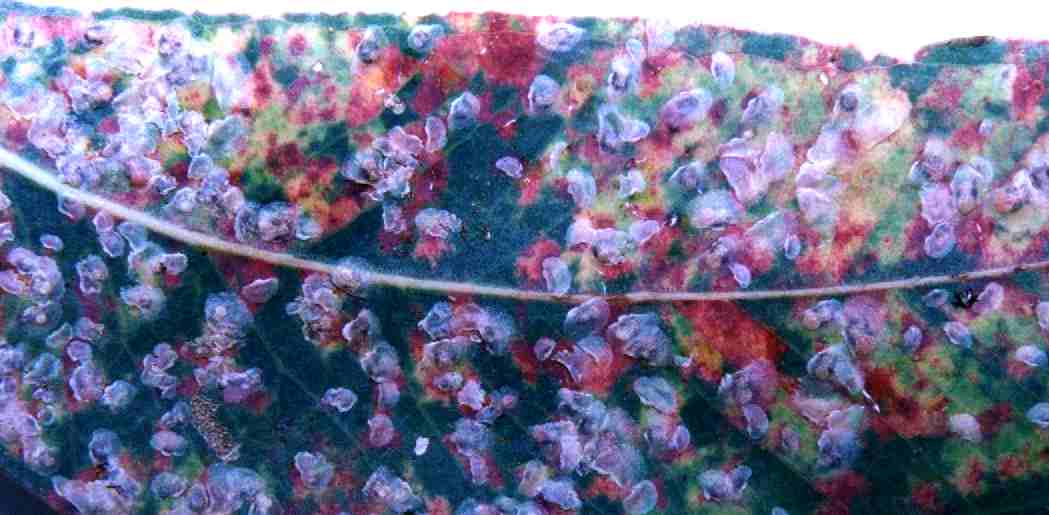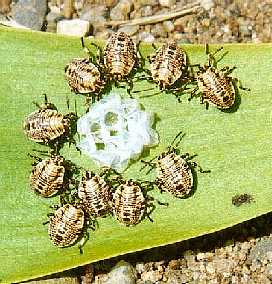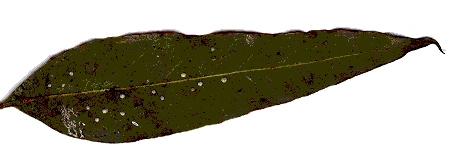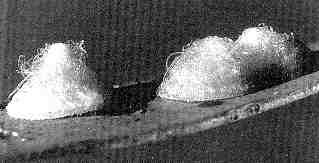Of importance for several species of Eucalyptus are the Lace and Basket Lerps Cardiaspina spp. and Glycaspis spp. (Psyllidae). Lerps are scales or tests of most immature stages. The nymphs live and feed beneath the lerp and are protected there from desiccation. In the case of Cardiaspina the lerps resemble lace or a turned-over basket, whereas the lerps of Glycaspis are of white, fibrous material. The shape of the lerp is characteristic for the species and can be used for their diagnostics. The lerps are made from starch, derived from the plant sap. While sucking the plant juice, the nymphs inject enzymes that break down the plant tissue. This later becomes visible as brown, red or yellow discoloration of a leaf. The feeding puncture usually looks irregular and scar-like. The adults looking like the miniatures of cicadas, are without lerps and hardly exceed 5 mm body length. Most species are of brown or yellowish coloration and are good fliers due to their well developed membranous wings. Because of their jumping hindlegs they are also called ‘jumping aphids’. The females possess a saw-like ovipositor which helps insert the base of the eggs into the leaf to avoid desiccation. A female can lay several hundred eggs during her short life-time. There are five or more generations per year in the Tropics.
Psyllids cause a more or less severe defoliation of their respective host. Some species cause the necrosis of a leaf, others only its discoloration. Natural enemies are spiders, mites, ladybirds, lacewings, parasitic wasps and some birds. Prolonged psyllid outbreaks result in a considerable loss of increment and die-back of the host. Severe outbreaks were not have not been reported in PNG so far.

Cardiaspina spp. lerps on Eucalyptus
leaf

Cardiaspina spp. adults

Glycaspis spp. lerps on Eucalyptus
leaf

white, fibrous Glycaspis spp.
lerps
(reproduced from CSIRO, 1991²)